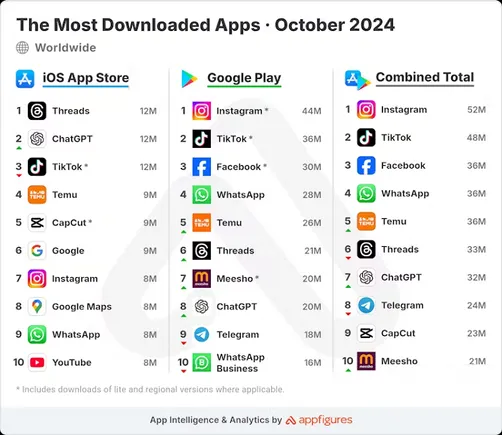“From the heights of these pyramids, forty centuries look down on us.” – Napoleon Bonaparte
Around 2540 B.C., Khufu, the Pharaoh of powerful Ancient Egypt at that time, brought in his vizier, Hemiunu, to plan Pharaoh’s legacy.
Previous Pharaohs had built tombs and monuments, demonstrating the might of Egypt’s ruling class throughout the land. But each ruler, of course, felt the need to surpass his predecessors, and Khufu was no different.
Designed by Hemiunu to be, not just the largest, but the most complex and incredible structure ever, construction on the Great Pyramid of Giza began. It took nearly 20 years but by the time it was finished, this massive tribute to Pharaoh would stand over 480 feet tall and 755 feet to each side.
This most famous pyramid, the last remaining of the Seven Wonders of the Ancient World, stands as an example to all of strength, planning and efficiency.
You see, in order to assemble the 2.3 million blocks used to construct the pyramid, Egyptian laborers would have needed to move an average of twelve 50 ton blocks per hour, day and night.
And of course, they started from the ground up, to form a solid base.
The Content Pyramid
When you want to develop a successful content marketing strategy, the base of that strategy is, of course, your content. And I’ve found that it’s easy for clients to conceptualize a Content Pyramid like this one when we’re determining what content is needed:

Throughout this article, you’ll find it helpful to refer to this free worksheet and fill it out with your own content ideas:
As you can see, the top of the Content Pyramid is dominated by a “top level page.” This is a page of your site that’s likely linked in your main menu, and is typically one of your most important services or products. When creating this page, there should be a single keyword phrase that we’re targeting — that’s the phrase that, when searched in Google, we want this page to come up and be clicked by potential clients.
In order for that page to be ranked well for that particular keyword phrase, it needs to be optimized for search. One way to “SEO” a page is to get “backlinks” to it. Backlinks are when other pages and sites link to your page or site. Google sees and tracks those links and considers that a major ranking factor within the search algorithm.
This is commonly referred to as “Link Juice.” When my site links to your page, I’m giving you link juice. And the better my site, the better the link juice that get’s shared with you.
What many don’t realize though is that internal pages have a limited amount of link juice as well. While not counted nearly so well as external links, they can still help you. And this system actually helps ensure that external links flow into your site as well.
As you can see in the graphic, the top level is supported by three supporting topics, and each supporting topic is supported by three blog posts or pages.
This is where the magic happens.
When you write one of those blog posts, you make sure that there’s a link within that post up to the supporting topic you’re writing about. Then, as you share that blog post out and other people begin to link to it on social media or directories and blog posts of their own, link juice starts to flow into that blog post and up to the supporting topic. And since each supporting topic is linked to the top-level page, the link juice flows all the way to the top.
The actual algorithms and rankings aren’t quite that straightforward, but the point is that this system works. If you follow my instructions, the result will be 13 pieces of quality content that are all highly optimized for search (as well as for reader education and lead generation).
Watch for a free worksheet at the end to help you sort out your own blog!
RELATED: How To Start A Blog: The Ultimate Guide
Content Pyramid Example
For the sake of simplicity, let’s assume that we run a graphic design shop, and that we want to talk about and rank for the term “WordPress Themes”. That becomes the Title of this Page, and the content of the Page should talk about this service that we’re providing, including three aspects of that service that we’re going to just touch on within the Page (Topics). In our example, supporting topics might be:
- Selecting A WordPress Theme
- Customizing A WordPress Theme
- Changing WordPress Themes
Each of those three Topics then gets it’s own Page, linking back up to the WordPress Themes Page. Each of these Pages should be at least 750 words in length, and make good use of this targeted keyword phrase.
Finally, for each one of these three Topic Pages, we’re going to (eventually) publish three blog posts providing specific information and guidance. “How To Backup Your WordPress Site Before Changing Themes” or “Why Responsive Design Is Important For WordPress Themes”.
Now, I mention eventually because it’s important to keep in mind that it’s not expected that all of this content will be developed overnight. In fact, it might take months to write, optimize and publish the various blog posts and pages on the lowest level.
But that said, it still must all be planned out ahead of time. From the top level page down to the individual blog posts, you need to brainstorm and decide in advance what each topic is going to be.
Targeting
I mentioned that you should have a single keyword phrase that you’re targeting. While the obvious example would be a product or service that you’re providing, you can just as easily choose to target specific demographics and customer segments.
First, if you haven’t already, consider going through some exercises to determine some of your Buyer Personas. These are amalgamates of the typical attributes you associate with your customers. You might have one set of services that appeals to startup entrepreneurs, and another that appeals to experienced business owners. Or perhaps you have specific geographic interests. Regardless of the breakdown, consider creating a complete Content Pyramid for each segment.
Next, prioritize them. Considerations might include the segment’s potential, competition, or availability of content and material to fill the pyramid. Once you have your segments identified and prioritized, it’s time to build your pyramids.
Make Your Plan
Start with the top level of your highest priority pyramid. This is where it’s a good idea to do some keyword research and make sure you’re targeting a phrase that people are actually searching on, and that it’s possible for you to rank organically.
In our example above, “WordPress” would be too vague and too high competition, while “WordPress Theme” is more specific, and more relevant to our target search. It’s important to find a balance between terms that have so much competition you can’t possibly hope to achieve decent rankings in a short amount of time, and between terms that get so few monthly searches that they’re not worth the effort. One rule of thumb might be to consider how many sales per month you’d like to achieve in a given month and multiply that by ten. That’s the minimum amount of search traffic your term needs in an average month.
Once you’ve determined your actual target phrase for this pyramid, you’ll need to decide what the three sub-topics are going to be. Unlike blog posts, which will simply link back up to one of the topics when they’re referenced, the three sub-topics are usually prominently mentioned on the top level page. A common technique is to have three columns, one for each sub-topic, with a title, introductory text, and a link to read more.
Next, consider the lowest level of content. This can be a combination of all kinds of content, but will typically consist of pages and blog posts. If any of the sub-topics can use additional static content that goes into more detail on a particular aspect, that’s a good use of a page. Blogs, on the other hand, might provide examples, news updates, personal experiences, how-to guides, reviews, and other perspectives on the topic.
Once you’ve brainstormed all 12 pieces of the Content Pyramid, you’re ready to start writing.
I recommend that you write the top level page, all three supporting pages, and one blog post before publishing. When all of that content has been written, optimized and polished, publish the pages all at the same time, and then publish the blog post shortly thereafter. Promote the blog post like you would any new blog post, and watch how your readers and visitors begin to travel up to your sub-topics and top level page.
You can then continue to write and publish the remaining pages and blog posts in your schedule, at whatever frequency and interval works for you. Just keep in mind that the faster you get of this content published and promoted, the faster Google will recognize the authority you’re building on this topic.
| Pro Tip: Make sure that you have a desired action on that top level page, whether it’s a product purchase or lead generation, and that you’re tracking that action completion as a goal within Google Analytics. You can then make use of Funnel Visualization to see how your traffic is coming and how your pyramid is performing. |
The Hard Part, Writing
Of course, writing that content is likely the hardest and certainly the most time-consuming part of what you’re trying to accomplish. Let’s see if we can’t make that easier.
First, if you have existing pages or blog content, don’t be afraid to use them. Fit them into your Content Pyramid wherever appropriate and update accordingly. Don’t duplicate the content… just link to or from the content depending on where in the pyramid it needs to go, and edit the content if warranted. For instance, if you’ve already published a blog post that perfectly supports a sub-topic, just edit the post to include a link to the new page.
Second, don’t feel as though you have to stick with the Plan. If you come up with a great idea for a blog post that wasn’t in the original list, run with it. This is just a template to make the process easier to digest and follow. And, for that matter, the numbers themselves are just arbitrary. Do you have to have three sub-topics and three blog posts per sub-topic? Nope. While I wouldn’t recommend less, you can certainly adjust up or down depending on available time and topics. Perhaps you need 4 – 5 sub-topics and some lend themselves to more blog posts than others. That’s OK, as long as you’re creating a high number of structured pieces of content.
Third, just as we’ve done with the overall hierarchy of content, so too can you do with individual blog posts. Create outlines for the individual posts. Adopt a template for the style of blog that you like to write. Personally, I use the 5-paragraph approach for a lot of articles: an introduction, three points, and a conclusion.
What’s important is that you continue to work toward a complete, well-assembled structure.
Mathematical Significance
While the size and scope of the Great Pyramid is easily what impresses everyone who lays eyes on it, those physical aspects are dwarfed by what I’m going to tell you next.
The accuracy of the pyramid’s workmanship is such that the four sides of the base have an average error of only 58 millimetres in length. The base is horizontal and flat to within ±15 mm (0.6 in). The sides of the square base are closely aligned to the four cardinal compass points (within four minutes of arc) based on true north, not magnetic north, and the finished base was squared to a mean corner error of only 12 seconds of arc. The completed design dimensions, as suggested by Egyptologist Sir Flinders Petrie’s survey and subsequent studies, are estimated to have originally been 280 royal cubits high by 440 cubits long at each of the four sides of its base. The ratio of the perimeter to height of 1760/280 royal cubits equates to 2π to an accuracy of better than 0.05%.1
Therefore…
- A pyramid based on Phi varies by only 0.025% from the Great Pyramid’s dimensions
- A pyramid based on Pi varies by only 0.1% from the Great Pyramid’s dimensions
- A pyramid based on areas is identical in geometry to one based on Phi
For reference…
- Phi is the Golden Ratio that appears throughout nature.
- Pi is the circumference of a circle in relation to its diameter.
- The Pythagorean Theorem is a mathematical formula expressed as a² + b² = c².
And all of that means…
The Great Pyramid is one of the most exact and perfect expressions of mathematical significance. For the ancient Egyptions to construct something so massive, yet with so much attention to detail, is impressive, to say the least.
And it should be inspiring.
If the ancients were able to carve 50 ton blocks into perfect squares that fit together virtually seamlessly, how much easier should it be for you to write a series of pages and posts that help educate your audience about your niche?
Now that you’re familiar with how to put together your own Content Pyramid, the next step is to download the free worksheet and start determining what your pages and posts should be.
Rest assured, I don’t spam my lists. I will simply be sending you more great articles on how to improve your blogging and social media. About one email per week. And if you’re not interested in the content I share in the future, you can always unsubscribe.
If you’re ready to dig into this and create an entire Content Marketing strategy for your blog or business, including a determination of target audience, as well as how to promote your blog content, this workshop is for you.
Related Resourcs for SMB Owners & Marketers
A Word From Our Sponsors
Get your video to look as dope as this using Ecamm.











